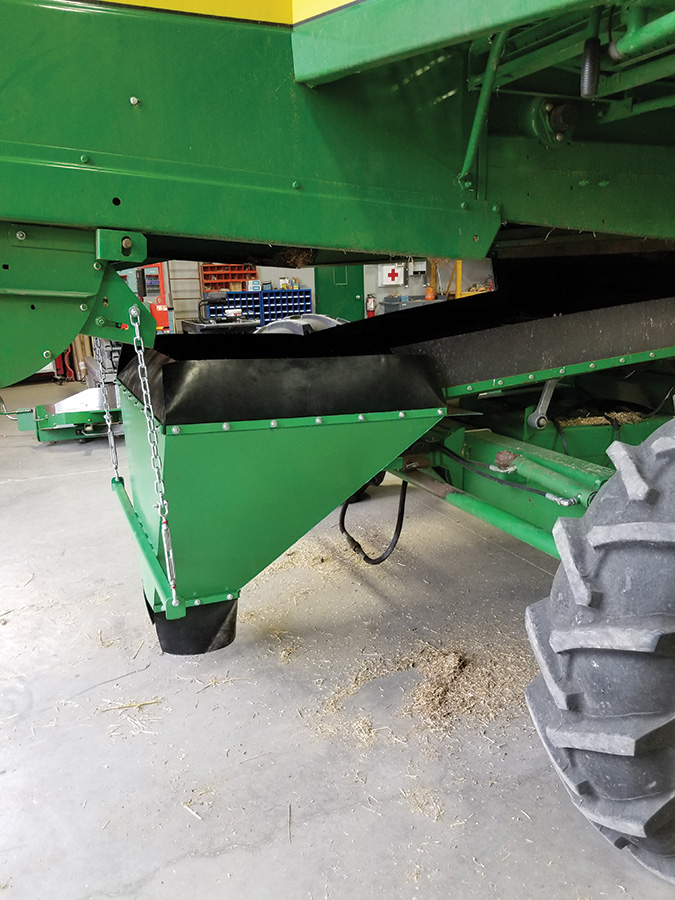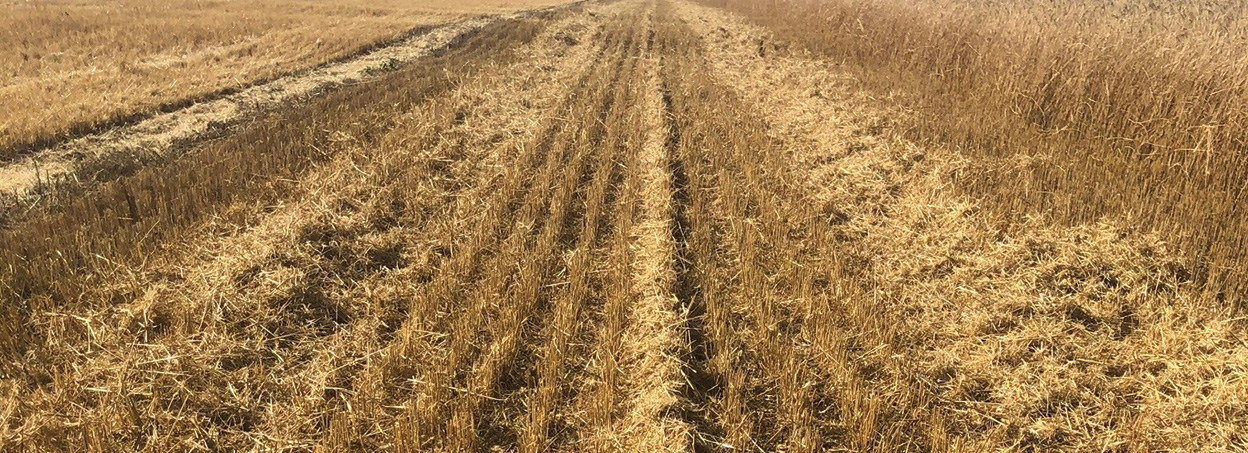Chaff lining not an effective herbicide alternative
KEY RESULT:
Chaff lining concentrates chaff (including harvested weed seeds) into a narrow line behind the combine, with the goal to smother weed seeds in chaff. In this study, chaff lining did reduce weed emergence, but did not actually reduce the weed seed bank. Weed seed viability was not reduced after overwintering under the chaff line, and in most cases increased compared to overwintering on bare ground. Where canola seeding rows intersected chaff lines, canola emergence dropped by about 50 plants per square metre, on average.
PROJECT NAME, PRINCIPAL INVESTIGATOR:
“Suitability and efficacy of chaff lining for weed control in
Western Canada” Breanne Tidemann, Agriculture and Agri-Food Canada, Lacombe
FUNDING:
Alberta Canola
Chaff lining is one way to limit the spread of seeds from herbicide-resistant weeds out the back of the combine. But does chaff lining work, and what do these lines mean for soil fertility and crop emergence?
Researchers took on this study because Western Canadian farmers need easily implemented and effective non-chemical weed control methods to support herbicides, and reduce the economic cost of herbicide-resistant weeds.
Harvest weed seed control is a group of non-chemical weed control techniques. They include narrow windrow burning, chaff lining, chaff collection, bale direct systems and physical impact mill systems. Expert opinion expects physical impact mills – the combine-mounted weed seed destroyers – to be the most likely harvest weed seed control technique to be adopted on a large scale in Western Canada. These mills have high levels of efficacy and reduced requirements for additional management. The principal investigator has previously studied physical impact mills.

This project is about chaff lining, which concentrates the chaff into a narrow line behind the combine. The goal is to block weed seed emergence by smothering seeds in chaff. A chaff lining chute costs about $5,000 and cheaper versions could be made in the shop. Chaff lining allows straw to be spread as normal, and requires no post-harvest management. The project compared three different combines, three locations and four crops – canola, peas, wheat and barley or rye.
Objectives are to investigate seed viability of wild oat, cleavers, volunteer canola, kochia, green foxtail and wild buckwheat after an overwintering period under and beside chaff lines. Researchers also investigated weed seed movement and capture in chaff lines, crop and weed emergence after chaff lining, and the impact of chaff lines on soil fertility and plant nutrient status.
Results
Chaff lining did not perform well in this study.
- Weed seed viability was not reduced after overwintering under the chaff line, and in most cases increased compared to overwintering on bare ground. The only exception was kochia seeds under the pea chaff line. (33 per cent of kochia seeds were viable after overwintering outside the chaff line, and 15 per cent in the pea chaff line.)
- While weed emergence was reduced in chaff lines and the researchers successfully collected a number of weeds in the chaff line, crop emergence where crop seeding rows intersected the chaff lines was also reduced. Chaff lines reduced canola emergence by about 50 plants per square metre, on average.
- Nutrients can be concentrated under the chaff lines, but it was highly inconsistent between sites and requires further investigation.
- Chaff lining may be more effective on small-seeded broadleaf weeds. It is less effective on larger-seeded weeds.
This study demonstrated that while chaff lining can reduce weed emergence, it does not reduce weed seed viability, can impact crop emergence, and efficacy is dependent on the amount of chaff produced.





